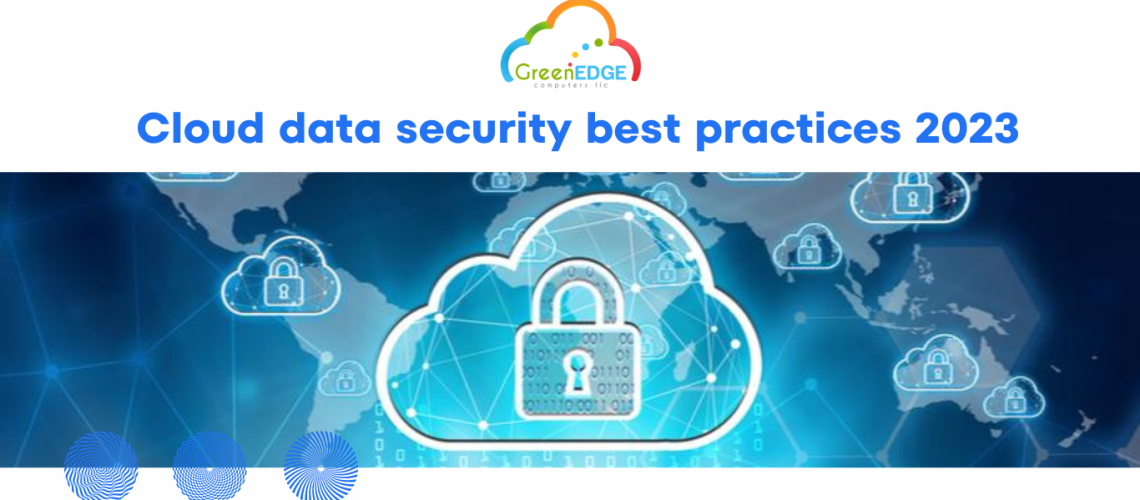If you wish to strengthen your data cloud security, keep reading this article. Green Edge Computers analyze the main weaknesses of the data cloud and provide some cloud data security best practices for securing your business-critical systems and data.
In this article, we will be going to cover these points:
- What is infrastructure security?
- Major security threats in cloud infrastructure security
- Best practices for infrastructure security
What is cloud infrastructure security?
Cloud infrastructure security refers to the set of practices, technologies, & policies that are put in place to protect the computing resources and data that are stored, processed, and transmitted through cloud-based systems. This includes the security of cloud computing architectures, networks, servers, virtual machines, storage systems, and applications.
If you want to know more about cloud infrastructure security then keep reading this article. Now, we are going to share with you the 5 major cloud infrastructure security threats.
5 major cloud infrastructure security threats
Here, we are going to share with you the 5 major cloud infrastructure security threats:
Data Breaches: Cloud data infrastructure can be vulnerable to data breaches, where sensitive information such as customer data or financial information is accessed or stolen. Breaches can occur due to poor access controls, weak passwords, or vulnerabilities in the cloud provider’s infrastructure.
Malware and Ransomware: Cloud infrastructure can be targeted by malware or ransomware, which can infect virtual machines and servers, and potentially spread throughout the cloud environment. Malware and ransomware can cause significant damage, including data loss or destruction, and can even result in costly ransom payments.
Insider Threats: Insider threats occur when your employee or contractor with access to the cloud infrastructure intentionally or accidentally causes harm to the system. This can include data theft, system sabotage, or other malicious actions.
DDoS Attacks: Cloud data infrastructure can also be targeted by distributed denial-of-service (DDoS) attacks, where a large number of requests overwhelm the system, causing it to crash or become unavailable. This is the fourth infrastructure security threat.
Misconfiguration: Misconfiguration happens when the settings and controls of a cloud system are not set up correctly, which can create security risks. This could happen if, for example, a storage area is accidentally left open to the public, security updates aren’t installed, or user access is not restricted properly. It’s important to make sure that cloud systems are set up correctly to avoid these types of mistakes and protect against security threats.
Businesses need to be aware of these threats and take appropriate measures to secure their cloud infrastructure data, such as implementing strong access controls and regularly updating software and security patches. But you should also know the best practices for infrastructure security
Best practices for infrastructure security
In this section, we will share with you the 5 best cloud infrastructure security practices.
Strong Passwords: This is the best infrastructure security practice. Use strong, unique passwords for your all accounts and systems. Avoid using easy passwords.
Multi-Factor Authentication: Use multi-factor authentication (MFA) to add an extra layer of security to accounts and systems. MFA needs users to provide a second form of identification, such as a code sent to their phone, in addition to a password.
Regular Updates: Regularly update software, operating systems, and firmware to ensure that security patches are installed and vulnerabilities are addressed.
Access Controls: Implement access controls to restrict access to sensitive data and systems. Limit access to only those who need it and use role-based access control (RBAC) to ensure that users have only the permissions they need to do their jobs.
Monitoring and Logging: This is the last and best practice of cloud infrastructure security. Implement monitoring and logging to detect and respond to security threats. This can include real-time monitoring of network traffic, system logs, and user activity.
Here, we shared with you the 5 best practices of cloud infrastructure security.
Conclusion:
Cloud infrastructure security is critical for businesses to protect against a range of security threats and ensure the confidentiality, integrity, and availability of their data and computing resources. In the above article, we will share complete information about cloud infrastructure security threats and practices. If you have any other questions then you can directly contact us at +971 4 3323352.



